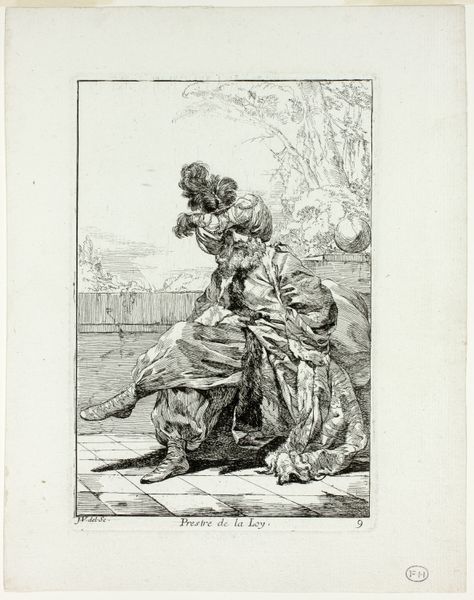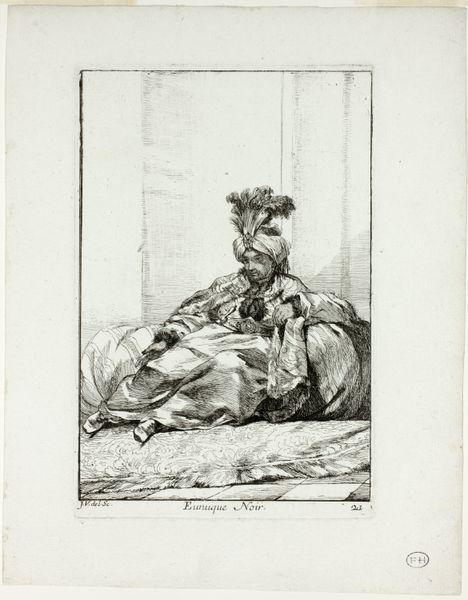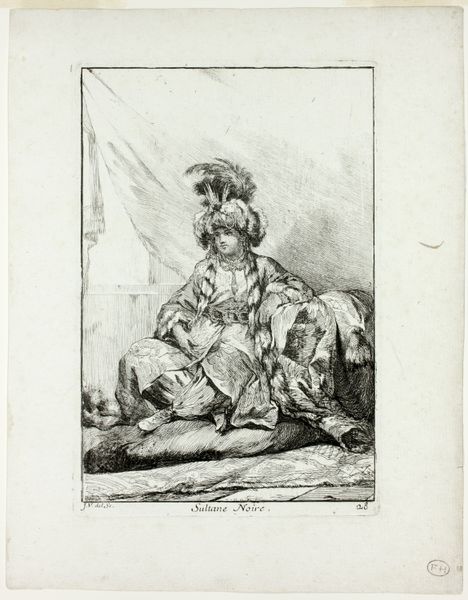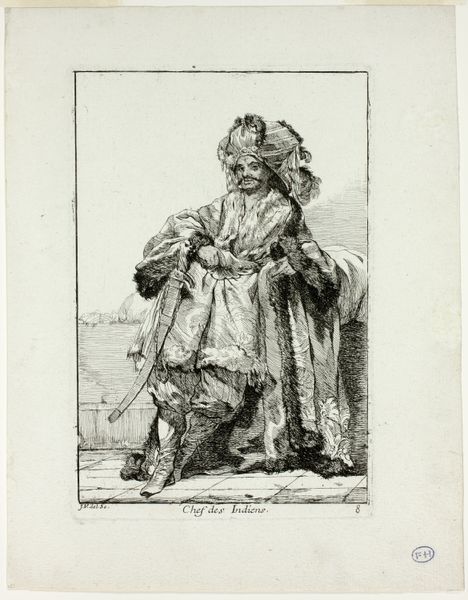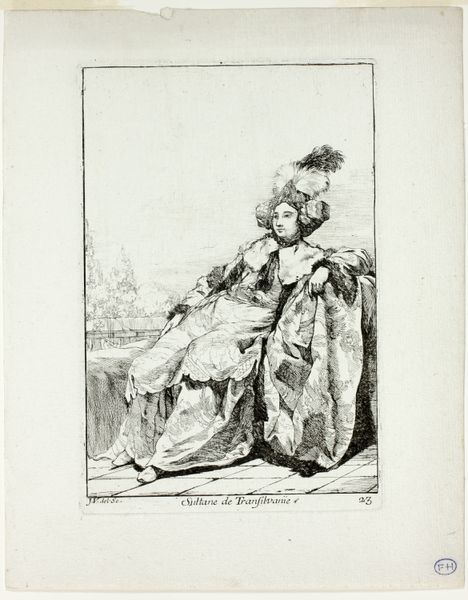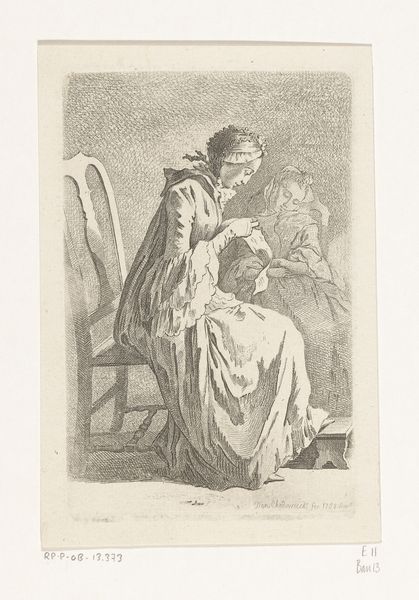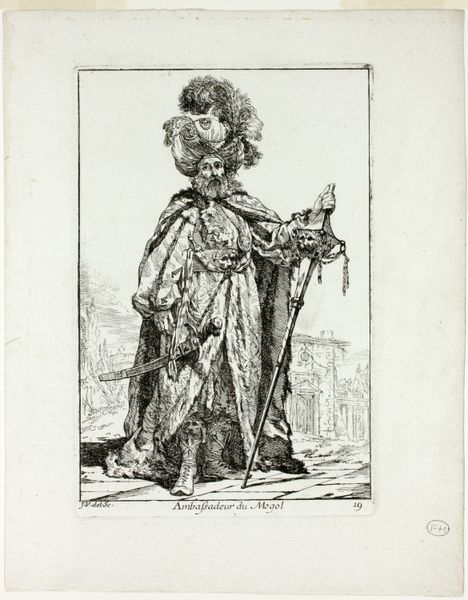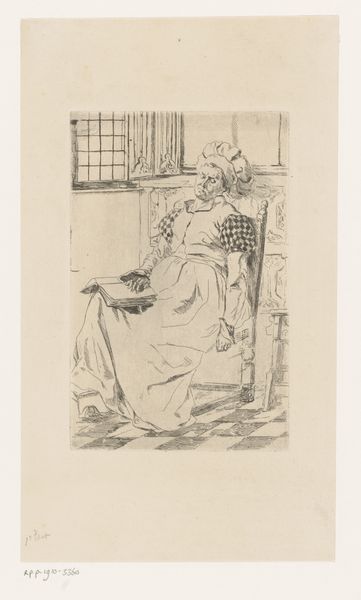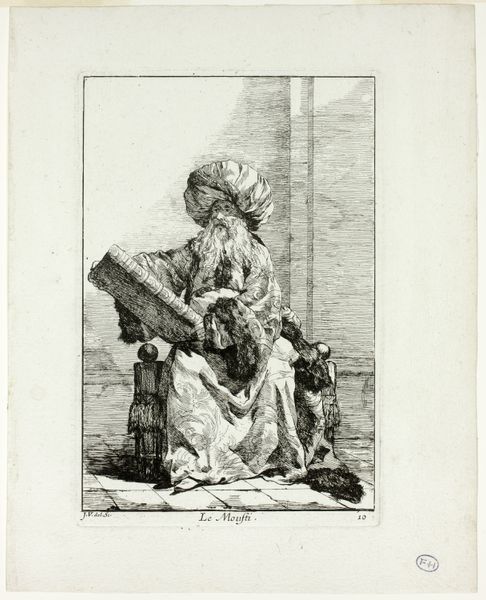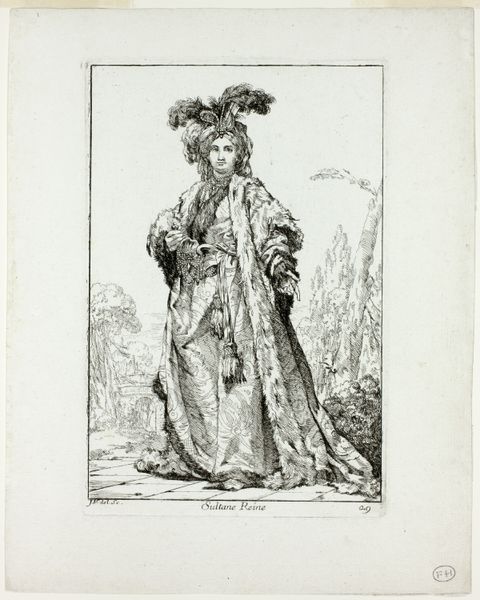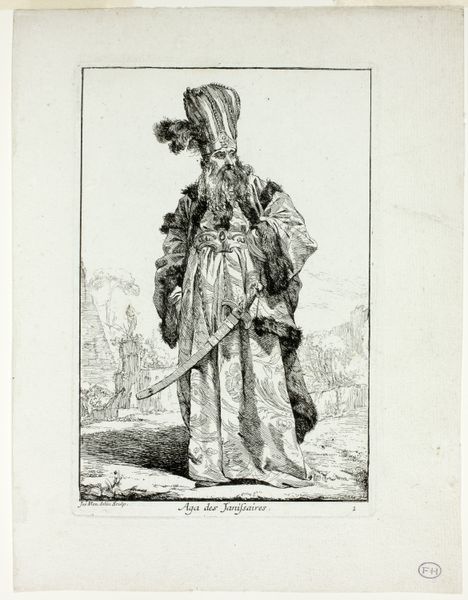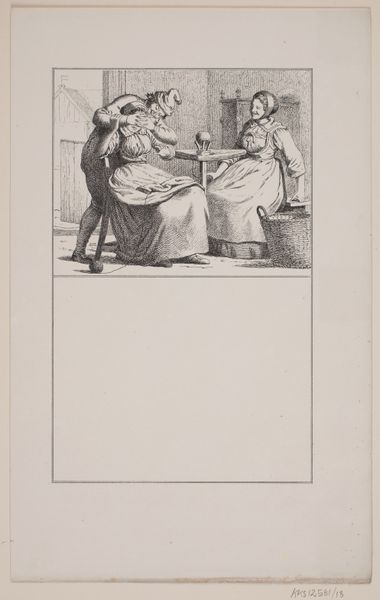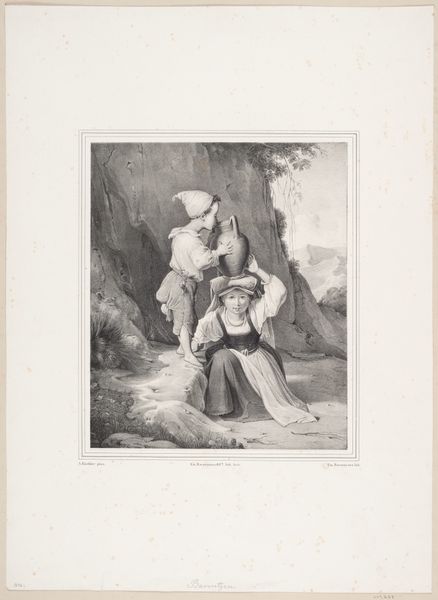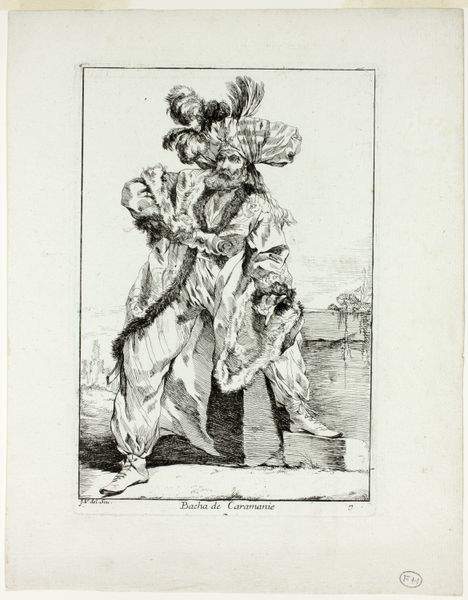
Emir Bachi, plate twelve from Caravanne du Sultan à la Mecque 1748
0:00
0:00
drawing, print, etching, paper
#
portrait
#
drawing
#
baroque
# print
#
etching
#
paper
#
orientalism
Dimensions: 195 × 131 mm (image); 203 × 135 mm (plate); 265 × 211 mm (sheet)
Copyright: Public Domain
Editor: So, here we have "Emir Bachi, plate twelve from Caravanne du Sultan à la Mecque" made in 1748 by Joseph Marie Vien, an etching on paper. The figure looks very grand, almost imposing, despite the small scale of the print. I'm struck by the detailed rendering of the fabrics and the beard. How do you interpret this work? Curator: Well, the image clearly draws on the artistic conventions of Orientalism, popular during the 18th century, which often exoticized and, frankly, misrepresented Middle Eastern cultures. It's crucial to consider the power dynamics at play here. Vien, as a European artist, is depicting a figure from a culture he likely had very limited direct knowledge of. Does this image reinforce or challenge existing stereotypes? Consider also, who was the target audience for such images? Editor: So it’s less about a factual representation and more about European perceptions, is that right? The turban and beard definitely contribute to a sense of otherness for a Western viewer. Curator: Exactly. The ‘otherness’ you pinpointed is constructed, carefully composed to satisfy European tastes and expectations. Notice the somewhat theatrical pose and the exaggerated details of the clothing. This image isn’t just about portraying a person; it’s about conveying a pre-conceived idea about an entire culture. What is the relationship between visuality, power and representation? Editor: It sounds like Vien's work is not just a simple portrait but a statement of cultural attitudes, perhaps unintentionally. I am compelled to wonder to what extent Orientalism affected actual relationships between people of the Middle East and the West. Curator: Precisely. Art doesn't exist in a vacuum; it's entangled with socio-political contexts and affects our perception in real time. Reflecting on works like this helps us unpack how these historical biases continue to shape our understanding of the world.
Comments
No comments
Be the first to comment and join the conversation on the ultimate creative platform.
